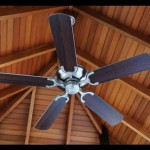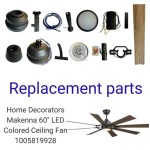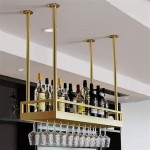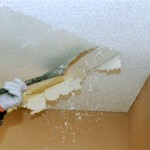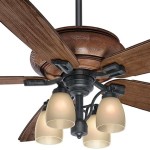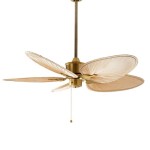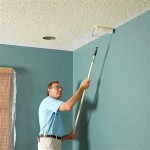Understanding the 56-Inch Ceiling Fan with Light and Remote
The 56-inch ceiling fan with light and remote control represents a versatile and practical solution for climate control and illumination in larger rooms. This combination of features offers convenience, energy efficiency, and aesthetic appeal, making it a popular choice for homeowners and businesses alike. The size, specifically 56 inches, is a critical aspect of its suitability for spaces exceeding the dimensions where smaller fans would be ineffective. These fans are engineered to circulate air more efficiently in areas such as large living rooms, master bedrooms, open-plan kitchens, or even covered outdoor patios.
The inclusion of an integrated light fixture further enhances the utility of the ceiling fan. This eliminates the need for separate light sources in the room, streamlining the design and saving valuable ceiling space. The remote control functionality adds a layer of convenience, allowing users to adjust fan speed, light intensity, and other settings from anywhere in the room. This feature is particularly beneficial for individuals with mobility issues or for adjusting settings from the comfort of a bed or sofa.
When selecting a 56-inch ceiling fan with light and remote, several factors should be considered. These include the fan's motor type, blade pitch, energy efficiency rating (such as ENERGY STAR certification), the type of light fixture, and the aesthetic design. Understanding these factors ensures that the chosen fan meets the specific needs and preferences of the user, providing optimal performance and satisfaction.
Determining the Ideal Room Size
The 56-inch blade span is specifically designed for rooms exceeding 400 square feet. Using a smaller fan in such a large space would result in inadequate air circulation, leading to uneven temperature distribution and reduced comfort. Conversely, using a fan that is too large in a small room can create a strong downdraft, causing discomfort and potentially creating an unpleasant breeze. Therefore, matching the fan size to the room size is paramount for optimal performance.
Accurately measuring the room is the first step in determining the appropriate fan size. Measure the length and width of the room in feet and multiply these dimensions to calculate the square footage. Once the square footage is known, it can be compared against the manufacturer's recommendations for the specific fan model. These recommendations are typically provided in the product specifications or installation manual.
Beyond the square footage, ceiling height also plays a crucial role in determining the ideal fan size and mounting method. For standard ceiling heights (8-9 feet), a flush mount or low-profile fan may be suitable. However, for higher ceilings (10 feet or more), a downrod is necessary to lower the fan blades to an optimal height for effective air circulation. The length of the downrod should be chosen so that the fan blades are approximately 8-9 feet above the floor.
Consider the room's intended use as well. A bedroom might benefit from a quieter fan with dimmable lighting, while a living room might require a more powerful fan with brighter lighting and multiple speed settings. These specific requirements will influence the choice of fan features and functionalities.
Examining Motor Types and Blade Pitch
The motor is the heart of any ceiling fan, and its type significantly impacts the fan's performance, energy efficiency, and lifespan. The three main types of ceiling fan motors are AC (Alternating Current) motors, DC (Direct Current) motors, and ECM (Electronically Commutated Motor) motors. AC motors are the traditional type and are generally more affordable. However, they are less energy-efficient and offer fewer speed options compared to DC and ECM motors.
DC motors are gaining popularity due to their significantly improved energy efficiency, often consuming up to 70% less energy than AC motors. DC motors also operate more quietly and offer a wider range of speed settings, providing greater control over airflow. ECM motors are a more advanced type of DC motor, offering even greater efficiency and more precise speed control. They are typically found in higher-end ceiling fan models.
Blade pitch refers to the angle at which the fan blades are set relative to the horizontal plane. A steeper blade pitch generally results in greater airflow, but it may also require more energy to operate. Conversely, a shallower blade pitch may consume less energy but provide less air circulation. The ideal blade pitch depends on the room size, ceiling height, and desired level of airflow. A blade pitch between 12 and 15 degrees is generally considered optimal for most applications.
The material of the fan blades also affects performance and durability. Common blade materials include wood, plastic, metal, and composite materials. Wood blades offer a traditional look and can be aesthetically pleasing, but they may be susceptible to warping or damage in humid environments. Plastic blades are lightweight and durable, but they may not be as aesthetically appealing as wood or metal blades. Metal blades are durable and can provide excellent airflow, but they may be noisier than other types of blades. Composite blades combine the advantages of different materials, offering a balance of durability, performance, and aesthetics.
Analyzing Lighting Options and Remote Control Features
The integrated light fixture in a 56-inch ceiling fan offers a convenient and space-saving lighting solution. Various lighting options are available, including incandescent bulbs, halogen bulbs, LED (Light Emitting Diode) bulbs, and integrated LED modules. Incandescent and halogen bulbs are less energy-efficient and have a shorter lifespan compared to LED options. LED bulbs are highly energy-efficient, long-lasting, and available in a wide range of color temperatures and brightness levels. Integrated LED modules offer a sleek and modern look and are typically more energy-efficient than replaceable LED bulbs.
The brightness of the light fixture is measured in lumens (lm). The appropriate lumen output depends on the room size and intended use. For general lighting in a living room or bedroom, a lumen output of 800-1600 lumens may be sufficient. However, for task lighting in a kitchen or office, a higher lumen output may be necessary. Dimmable lighting is a desirable feature that allows users to adjust the light intensity to suit their preferences and needs.
The remote control functionality provides convenient control over the fan's speed, light intensity, and other settings. Basic remote controls offer simple on/off and speed control functions. More advanced remote controls may include features such as dimming control, timer settings, reverse direction control (for seasonal use), and even smart home integration capabilities. Some remote controls also feature a learn function, allowing them to be programmed to control multiple fans or other devices in the home.
When selecting a ceiling fan with a remote control, consider the range and reliability of the remote. A remote with a strong signal and a long range is essential for convenient operation from anywhere in the room. Also, consider the type of battery used by the remote and the ease of battery replacement. Some remote controls use standard AA or AAA batteries, while others use specialized button cell batteries. Ensure that the remote control is easy to use and understand, with clear and intuitive buttons and labels.
Finally, installation is a crucial aspect to consider. While some individuals may be comfortable installing a ceiling fan themselves, professional installation is generally recommended, especially if electrical wiring is involved. A qualified electrician can ensure that the fan is properly installed and wired, providing safe and reliable operation. Following the manufacturer's instructions carefully is essential for proper installation and to avoid voiding the warranty.

Home Decorators Collection Baxtan 56 In Indoor Brushed Gold Ceiling Fan With Warm White Integrated Led Remote Included Am731a Cb The

Aluocyi 56 Inch Matte Black Ceiling Fan With Lights And Remote Indoor Outdoor Reverse Airflow 6 Speeds For Living Room Walmart Com

Carro Brently 56 In Dimmable Led Indoor Outdoor Black Smart Ceiling Fan With Light And Remote Works W Alexa Google Home S563b L12 B2 1g The

56 Minka Aire Bling Led Broe Crystal Indoor Ceiling Fan With Remote 67k71 Lamps Plus

Ascender 56 Inch 5 Blade Smart Ceiling Fan With Led Light Remote Con

56 Inch Ceiling Fan With Remote And Lights For Smart Indoor Walmart Com

Honeywell Kaliza 56 In Bright White Indoor Ceiling Fan With Light And Remote 6 Blade The Fans Department At Lowes Com

Aspen Smart Ceiling Fan With Led Light And Remote Outdoor Indoor 56 Smafan Com

Huntley 56 Inch 5 Blade Crystal Ceiling Fan With Light Remote Contro

56 Modern Fan Ic Air3 Dc Nickel Led Ceiling With Remote 131g1 Lamps Plus
See Also

